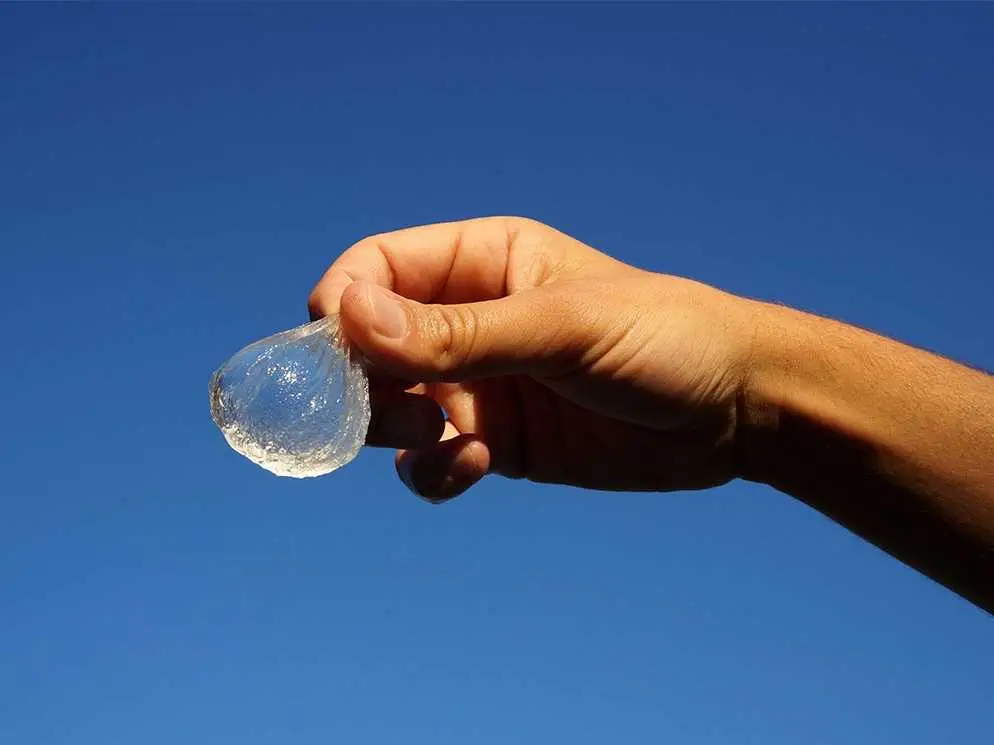A Review of Alternative Bottleless Water Ooho
Science
5
‘Ooho’ is an edible water bottle that is made with waterproof seaweed film. The Skipping Rock Lab first developed this product and created the original, however, now Notpla (which stands for Not-Plastic) a sustainable packaging company produces the Ooho 'bottle'. The Skipping Rock Lab aims to reduce plastic packaging waste, which inspired Ooho. Ooho is unlike other water bottles since it is edible, not made of plastic, small enough to put into the mouth at once, and has a gelatin-like texture, which can be swallowed easily. With these special characteristics, the aim of this product is to reduce environmental issues caused by non-reusable packaging waste.
As Ooho is a biodegradable, sustainable product, it reduces plastic packaging wastes, having a multitude of positive impacts on the environment. Microplastics are harmful toxins to both humans and animals and are often ingested through the use of plastic water bottles. This not only happens directly but also when plastics are broken down in the ocean. Marine life eats these, and then we in turn eat the marine life in a cycle of ingesting microplastics, which has a detrimental effect on our health in the long run. By switching to an Ooho water bottle, we can avoid this issue and decrease the harmful effects on the environment, and our health.
Ooho also provides real-life benefits with its small size and lightweight, making it more convenient to carry around than a conventional water bottle. In fact, in the 2019 London Marathon, Ooho water bottles were used by the athletes to reduce the number of plastic bottles thrown away, showing that Ooho is quick, light, and convenient. This product makes it easy for athletes to quench their thirst quickly by putting the whole ‘bottle’ of Ooho into their mouth. The plastic waste created at athletic events is a prime example of how Ooho can reduce the waste created by the use of traditional plastic water bottles. The small size and biodegradable nature of the Ooho material make it useful for other purposes. Besides water, it has the ability to carry other liquids in a small capsule form. We can see this material used in washing detergent pods, and by making this simple change from traditional washing detergent bottles, plastic use is decreased. Ooho might also be used to hold small quantities of milk for daily drinks like tea and coffee -- these drinks are regularly drunk by the public and therefore this would save non-biodegradable plastic from being used.
Bottleless water is also a strong alternative to the use of plastic water bottles. However, it may not be practical in our everyday use. Since Ooho is not solid, there is a possibility of bursting, such as if you were to throw it in a bag on the go. The Ooho ‘bottle’ is made from seaweed causing a slimy texture, and this niche product may not appeal to all customers. Also, with its small size, it can only contain a limited amount of water, versus water bottles which usually contain 500 ml to 1 liter.
In conclusion, Ooho achieves its main goal of reducing plastic waste by being a biodegradable alternative. Although Ooho may not replace all water bottles, its use in replacing other plastics such as detergent and single-serving milk, is effective in reducing waste. The small changes can add up to reducing plastic waste to help the environment and fight climate change. Ooho inspires others to make small changes for the planet in their everyday lives. These changes will continue to have a positive impact on the environment.
2023/04/23

Share
Dongha Kim
Science

Robinson Review Favorites
Songi Chai, Yubin Cho, Seohyun Jang..
Trending on Robinson Review
Contact Us





